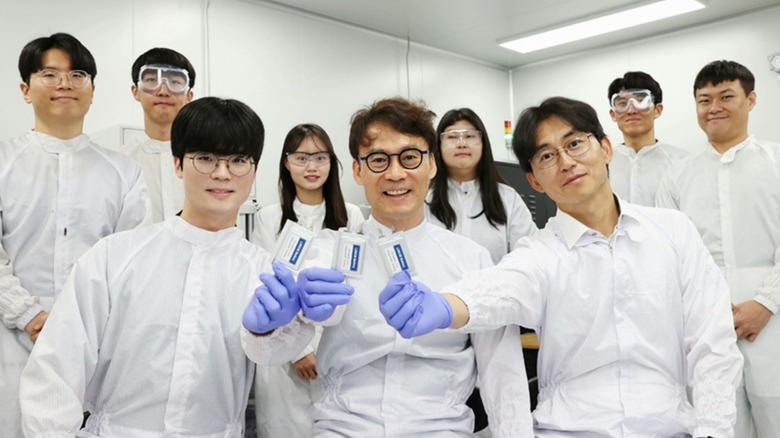This EV Battery Breakthrough Promises Huge Range On Only A 12-Minute Charge
One of the biggest conundrums that buyers face before leaping to an electric car is range anxiety. Over the years, the charging infrastructure has improved dramatically, but the slow pace of charging remains a crucial challenge. Tesla's Superchargers take roughly 15 minutes to put 175 miles worth of range battery, while the at-home Level 2 wall charger can take 8 to 10 hours to fully charge. All in all, you still get a maximum range of under 400 miles. In a nutshell, the problem is two-fold; one that limits the charging speed, as well as the battery capacity.
Researchers from the Korea Advanced Institute of Science & Technology (KAIST) now claim to have made a breakthrough that solves both problems in one go. In partnership with the LG-backed Frontier Research Laboratory (FRL), the team worked on a novel electrolyte that solves the nagging problem of dendrite formation in Lithium-based battery packs. The new battery architecture, according to the team, allows the development of battery packs that charge faster, offer more range, and last longer.
Just how much? Well, as per a press statement, the batteries can offer up to 497 miles of range, while the underlying anode-electrolyte innovations will let users fully charge the battery pack in just 12 minutes. Additionally, these batteries should retain their performance for over 186,400 miles traveled. That's more or less mainstream, at least by Tesla standards. In its 2023 Impact Report, the carmaker revealed that the batteries inside the Model 3 and Y can lose only 15% of their natural capacity after covering 200,000 miles.
The secret sauce is electrolytes
At the heart of the latest breakthrough from KAIST is a modification to the anode material and the electrolyte used inside the battery pack. "It has overcome the biggest barrier to the introduction of lithium-metal batteries for electric vehicles," said Hee Tak Kim, Professor from Chemical and Biomolecular Engineering at KAIST. Scientists have been experimenting with batteries that replace the graphite anode with Lithium to enhance their performance, but dendrite formation has proved to be a challenge that not only reduces the batteries' performance, but also poses a short circuit risk at high capacity charging.
As part of their research, the team realized that the reason for dendrite formation is the haphazard deposition of inorganic material on the Lithium anode, a process that is more commonly known as Lithium plating. To overcome the challenge, the team came up with a new medium they described as a "cohesion-inhibiting new liquid electrolyte" in a paper published in the Nature Portfolio journal. The central role of this special electrolyte is to ensure that when ions are deposited on the solid Lithium anode, they form a uniform surface layer.
The team notes that their new electrolyte relies on an anion structure with a weak binding affinity to lithium ions (Li⁺) that helps reduce dendrite formation, while supercharging the battery pack. The team analyzed the efficiency of pyran-based electrolytes within pouch cells designed for high-power and high-energy applications. The former category, with an energy density of 321 Wh/kg, took 12 minutes to go from empty to 70% charge level. The latter, which climbs to 386 Wh/kg, reached 80% state of charge (SoC) in 17 minutes.

